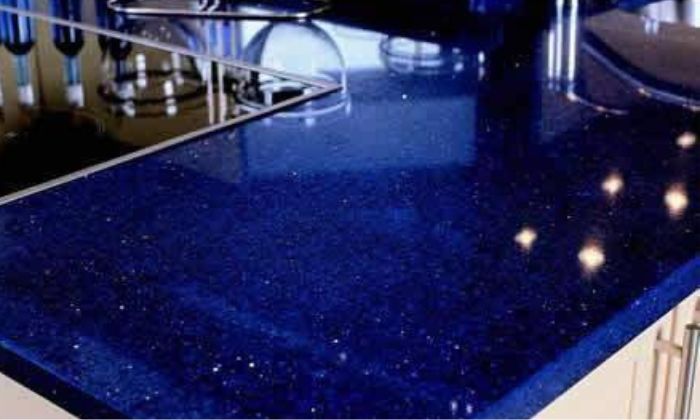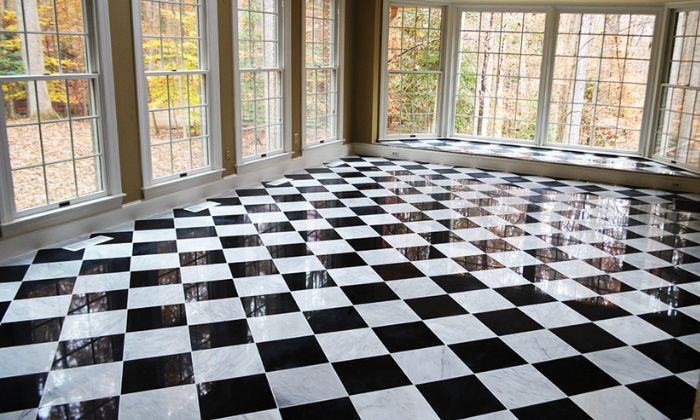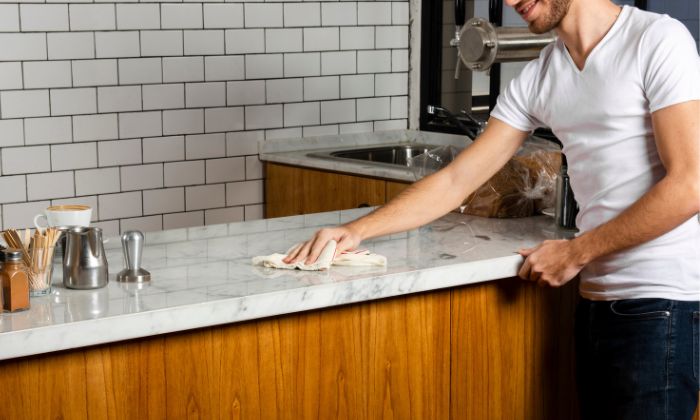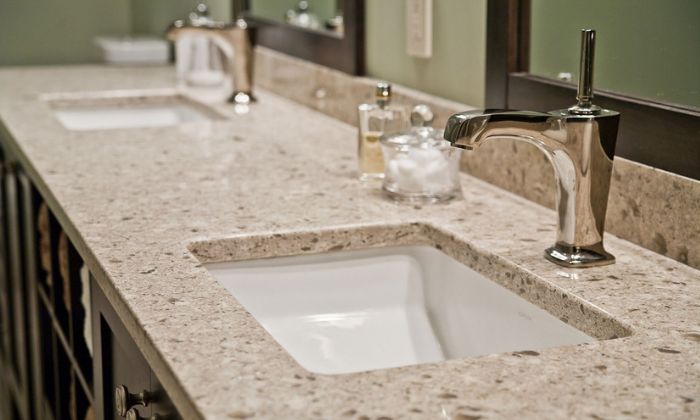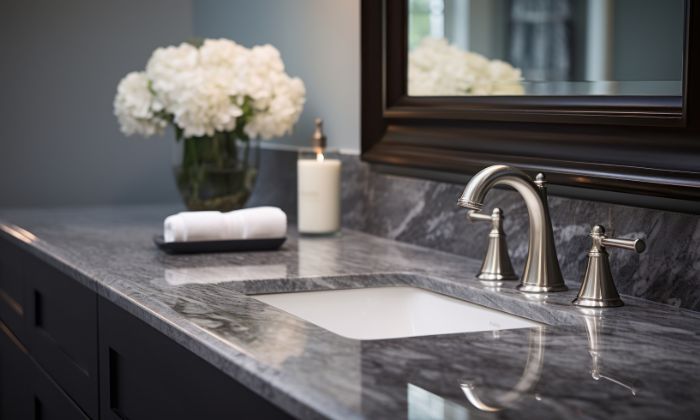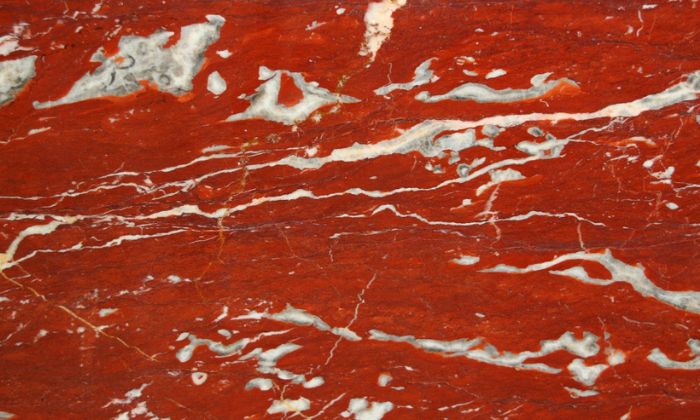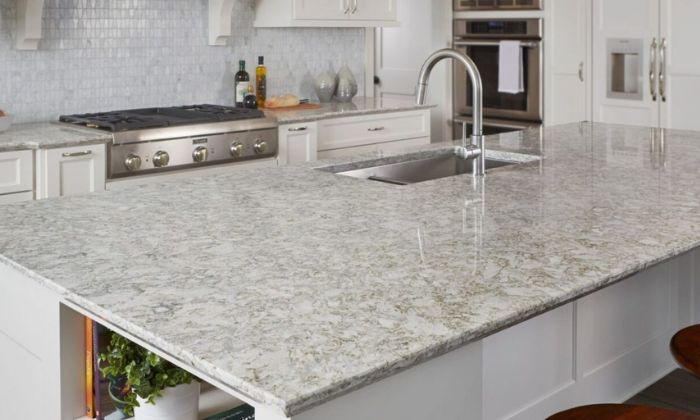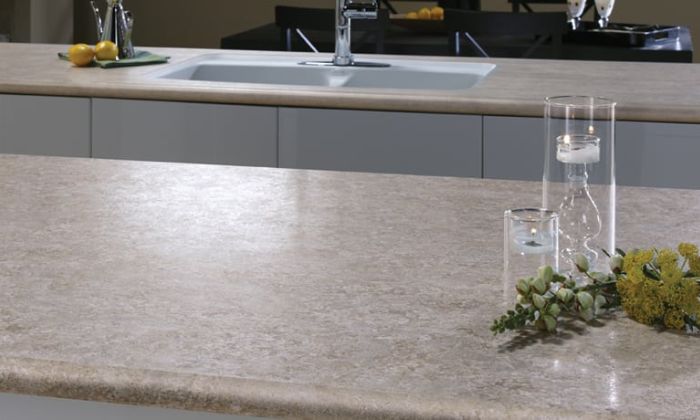Everything You Need to Know About Blue Granite Countertops
Blue granite countertops have become a popular choice for homeowners looking to add a unique touch to their kitchen or bathroom. Known for their striking colors and natural beauty, blue granite brings an element of sophistication and elegance to any space. Whether you’re renovating your kitchen or designing a new bathroom, blue granite for countertops can be the perfect addition. In this article, we’ll explore the different types of blue granite, their advantages and disadvantages, design ideas, and maintenance tips to help you make an informed decision. The Best Blue Granite Countertops for Your Kitchen Blue granite comes in a variety of shades and patterns, making it a versatile option for different design styles. Below is the list of some most popular blue granite for countertops that you can consider for your kitchen or bathroom. Light Blue Granite Countertops Light blue granite countertops bring a calm and elegant touch to any space. It offers a gentle contrast to the bolder tones found in darker granite options. The light blue colors are often interwoven with white veins or specks, creating a delicate and soothing pattern that enhances the overall ambiance of the room. This type of granite is perfect for those looking to introduce a hint of color without dominating the space, making it a versatile choice for both modern and traditional interiors. The calming tones of light blue granite countertops can brighten up a kitchen or bathroom, making the area feel more open and inviting. These countertops work well with a variety of cabinet colors, from white and light wood to deeper shades, offering flexibility in design. Additionally, light blue granite is durable and easy to maintain, providing both beauty and functionality. Whether you’re aiming for a coastal-inspired kitchen or a tranquil bathroom retreat, light blue granite countertops offer a unique blend of subtlety and sophistication, making them an excellent choice for any home. Blue Pearl Granite Countertops Blue Pearl granite countertops are prized for their striking blue color, accented with silver and gray tones. Quarried in Norway, this granite is renowned for its shimmering, reflective surface that enhances the visual appeal of any space. The interplay of blue and silver hues creates a captivating effect, adding depth and dimension to countertops. This makes Blue Pearl granite a favorite for modern and contemporary interiors, where its luxurious look elevates the overall design. Durable and eye-catching, Blue Pearl granite combines functionality with aesthetic appeal, making it a popular choice for kitchens and bathrooms. White and Blue Granite Countertops White and blue granite countertops offer a stunning blend of classic elegance and modern appeal. This granite typically showcases a white background highlighted by striking blue veins or speckles, creating a visually captivating contrast. The cool tones of blue complement the clean, crisp white, adding depth and interest to any kitchen or bathroom. These countertops can brighten up a space, making it feel more open and inviting. Their unique color combination works well with various design styles, from traditional to contemporary, making them a versatile choice for any home. Baltic Blue Granite Baltic Blue Granite is a stunning natural stone known for its deep, luxurious blue tones that create a striking visual impact. Its rich, dark hues are complemented by subtle patterns, often featuring specks of gray, black, and even hints of gold, giving it a unique and elegant appearance. This granite is highly sought after for countertops, adding a touch of sophistication to kitchens and bathrooms. Its durability and resistance to heat, scratches, and stains make it not only beautiful but also practical for everyday use, making Baltic Blue Granite a top choice for those looking to make a bold, timeless statement in their home. Volga Blue Granite Volga Blue granite is a striking natural stone, prized for its deep blue and black hues accented by iridescent blue and green flecks. Quarried in Ukraine, this granite stands out for its dramatic and luxurious appearance, making it a popular choice for both kitchen and bathroom countertops. The unique color patterns create a bold and sophisticated look that enhances any space. Its durability and resistance to heat and scratches add to its appeal, ensuring that it remains beautiful and functional over time. Volga Blue granite is perfect for those seeking an elegant yet durable countertop material. Blue Bahia Granite Blue Bahia granite is a rare and exotic stone from Brazil, prized for its striking blue color and intricate patterns. This granite is highly sought after for countertops, adding a touch of luxury and uniqueness to any space. Its vibrant hues and natural veining make it an eye-catching centerpiece, perfect for creating a statement in kitchens and bathrooms. Due to its rarity, Blue Bahia granite is often considered a premium choice, ideal for those looking to elevate the aesthetic appeal of their home with a one-of-a-kind natural stone. Blue Dunes Granite Blue Dunes granite is an elegant and versatile stone featuring a blend of blue, gray, and beige tones. Its neutral yet unique color palette makes it an ideal choice for those looking to add subtle sophistication to their countertops. The soft hints of blue in Blue Dunes granite add a touch of color without overwhelming the space. It allows to harmonize with various cabinet and backsplash colors. This adaptability makes Blue Dunes granite suitable for a wide range of interior design styles, from modern to traditional, ensuring that it complements any kitchen or bathroom decor seamlessly. Sapphire Blue Granite Sapphire Blue granite is renowned for its striking deep blue hue, enhanced with black and silver flecks that create a sophisticated look. This granite’s vibrant color brings a touch of opulence to any room, making it a popular choice for upscale interiors. Beyond its visual appeal, Sapphire Blue granite is highly durable and resistant to scratches, making it an excellent option for high-traffic areas such as kitchens and bathrooms. Its resilience ensures that it maintains its beauty and
Everything You Need to Know About Blue Granite Countertops Read More »

